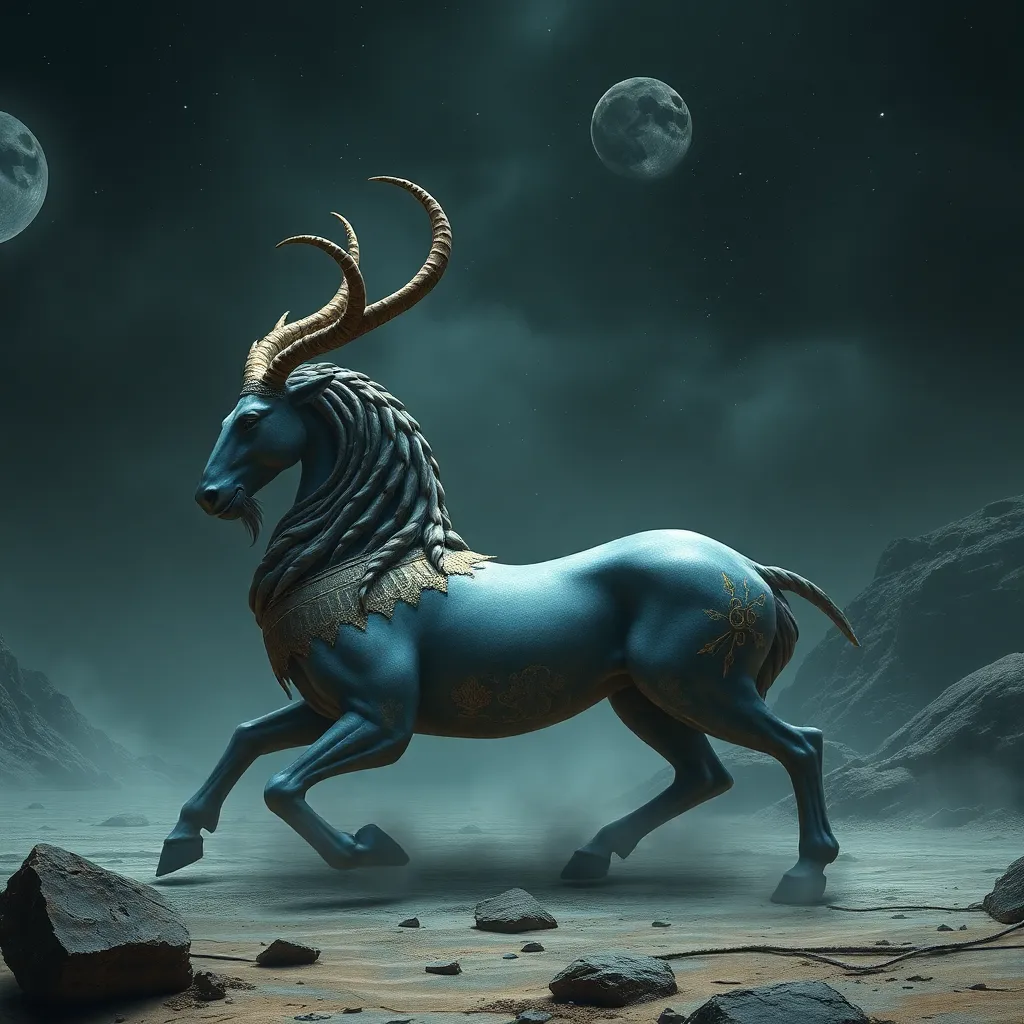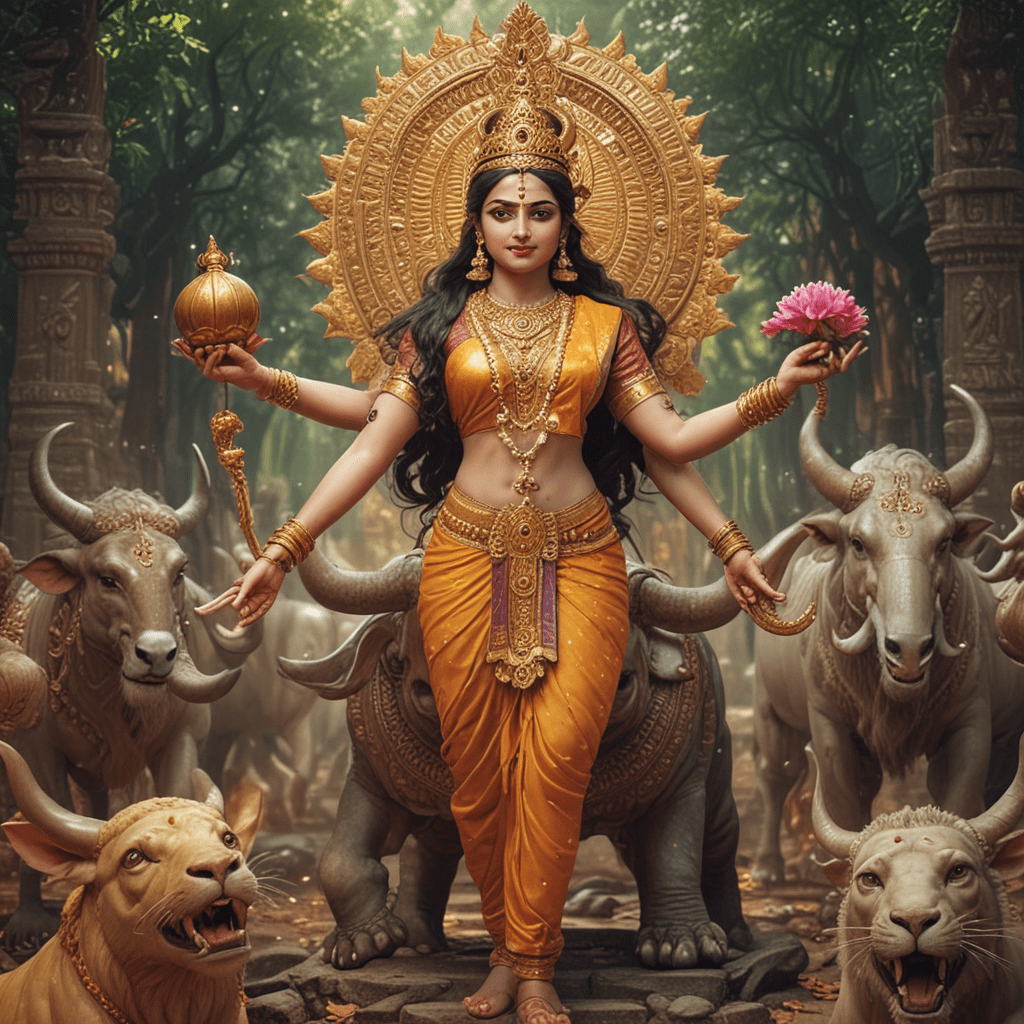Mythical Guardians of Korea: The Four Directions
Introduction: The Four Guardians and Their Significance
In the rich tapestry of Korean mythology, the Four Guardians, also known as the Four Symbols, hold a prominent place. These mythical creatures, representing the four cardinal directions, are not just symbolic figures but powerful deities that safeguard the universe and embody essential virtues. The guardians are believed to influence the flow of cosmic energy, protect the realm from evil forces, and ensure balance within the natural world. Their presence extends beyond the realm of mythology, deeply ingrained in Korean art, architecture, and cultural practices.
The Guardians and Their Roles
The Four Guardians, known as the Sa-Sang (Four Symbols) in Korean, are:
- The Blue Dragon of the East: Representing spring and renewal, the Blue Dragon embodies the qualities of growth, vitality, and creativity.
- The White Tiger of the West: Symbolizing autumn and strength, the White Tiger embodies courage, determination, and justice.
- The Red Phoenix of the South: Representing summer and rebirth, the Red Phoenix embodies brilliance, transformation, and prosperity.
- The Black Tortoise of the North: Symbolizing winter and wisdom, the Black Tortoise embodies stability, longevity, and perseverance.
The Blue Dragon of the East: The Symbol of Spring and Renewal
The Blue Dragon, or Cheong-ryong in Korean, is a majestic creature often depicted with serpentine features. It embodies the vibrant energy of spring, representing the awakening of nature and the promise of new life. The Blue Dragon's movement is associated with the east, the direction of the rising sun, symbolizing hope and a fresh start. In Korean art, the Blue Dragon is often depicted with scales shimmering in hues of blue and green, signifying its connection to the heavens and the earth.
The Blue Dragon is more than just a symbol of spring; it is also a powerful guardian. In Korean mythology, the Blue Dragon is believed to control the winds and the rains, ensuring a bountiful harvest and protecting the land from drought. Its presence is a reminder of the constant cycle of life and the transformative power of nature.
The White Tiger of the West: The Symbol of Autumn and Strength
The White Tiger, or Baekho in Korean, is a fierce and imposing creature often depicted with sharp claws and fangs. It embodies the strength and determination of autumn, a time of harvest and reflection. The White Tiger's direction is west, the setting sun, representing the end of a cycle and a time for introspection. In Korean art, the White Tiger is often depicted with its coat gleaming in shades of white and black, symbolizing its dual nature of both power and wisdom.
The White Tiger is not only a symbol of strength but also a guardian of justice. In Korean mythology, the White Tiger is believed to be the protector of warriors and those who fight for righteousness. Its presence is a reminder of the importance of courage in the face of adversity and the need for justice in the face of wrongdoing.
The Red Phoenix of the South: The Symbol of Summer and Rebirth
The Red Phoenix, or Jujo in Korean, is a magnificent bird often depicted with feathers ablaze in fiery hues. It embodies the radiant energy of summer, representing the peak of growth and the potential for transformation. The Red Phoenix's direction is south, the direction of the sun at its zenith, symbolizing the height of power and the culmination of life's journey. In Korean art, the Red Phoenix is often depicted with wings spread wide, signifying its ability to soar to great heights and overcome any obstacle.
The Red Phoenix is more than just a symbol of summer; it is also a symbol of rebirth and immortality. In Korean mythology, the Red Phoenix is believed to have the power to rise from ashes, symbolizing the ability to overcome adversity and emerge stronger. Its presence is a reminder of the cyclical nature of life and the endless possibilities that exist beyond death.
The Guardians in Korean Art and Culture
The Four Guardians are deeply ingrained in Korean art, architecture, and cultural expressions. They are frequently depicted in paintings, sculptures, and traditional crafts, guarding temples, palaces, and even everyday objects. The Blue Dragon is often depicted adorning the eaves of temples, symbolizing the connection between the spiritual realm and the natural world. The White Tiger, with its strong presence and protective nature, is often seen guarding tombs and ancestral shrines, protecting the spirits of the departed. The Red Phoenix, with its vibrant colors and symbolic meaning of rebirth, is often featured in embroidered fabrics and decorative objects, representing good luck and prosperity. The Black Tortoise, embodying wisdom and stability, is often represented in architectural structures, symbolizing a firm foundation and longevity.
The Four Guardians also hold significance in traditional Korean dance and music. The Blue Dragon, for instance, is associated with the dance Cheong-ryong-mu, a spirited performance that reflects the energy and vibrancy of spring. The White Tiger, on the other hand, is associated with the Baekho-mu, a powerful and dramatic dance that showcases the strength and determination of the beast.
Theories on the Origins of the Four Guardians
While the Four Guardians are deeply integrated into Korean mythology, tracing their origins involves intertwined connections with Chinese mythology and local Korean beliefs. Some scholars argue that the concept of the Four Guardians originated in ancient China, where they were known as the Si Xiang (Four Symbols). These symbols were associated with the four directions, the four seasons, and the five elements.
However, the Korean version of the Four Guardians, the Sa-Sang, took on unique characteristics and symbolism within Korean culture. They became associated with Korean deities and legends, and their roles expanded to encompass the protection of the Korean realm and the embodiment of specific virtues valued in Korean society.
The Influence of Chinese Mythology
The influence of Chinese mythology is undeniable in the development of Korean mythology. The Four Guardians, the Si Xiang, were imported from China during the Three Kingdoms period, and their imagery and symbolism resonated with Korean cultural beliefs. The adoption of the Four Guardians was not just a cultural borrowing but a process of adaptation and evolution, as the Sa-Sang were integrated into Korean mythology, folklore, and artistic traditions.
The Chinese Four Symbols also influenced many other aspects of Korean culture, including the arrangement of government offices, the structure of cities, and the practice of feng shui, the art of harmonizing oneself with the surrounding environment by aligning with the flow of cosmic energy.
The Importance of the Four Guardians in Korean Beliefs and Practices
The Four Guardians are not merely mythical creatures in Korean mythology; they are deeply ingrained in Korean beliefs and practices. They symbolize concepts that are central to Korean culture, such as harmony, balance, and the cyclical nature of life. The Four Guardians are believed to influence the flow of energy in the universe, protecting the realm from evil forces, and ensuring stability and prosperity.
Their presence extends beyond the realm of mythology, being incorporated into rituals, ceremonies, and everyday life. For example, the Blue Dragon is invoked for protection from disease and for a bountiful harvest, while the White Tiger is called upon to protect travelers and warriors. The Red Phoenix is venerated for its ability to bring good luck and prosperity, and the Black Tortoise is revered for its wisdom and longevity.
The Four Guardians continue to play a vital role in contemporary Korean culture. They are symbols of national identity, representing the resilience and enduring spirit of the Korean people. Their imagery continues to be featured in art, architecture, and design, reminding Koreans of their rich cultural heritage and their connection to the mythical world.
FAQ
What is the significance of the Four Guardians in Korean mythology?
The Four Guardians are powerful deities that safeguard the universe and embody essential virtues in Korean mythology. They represent the four directions, seasons, and embody core values like growth, strength, rebirth, and wisdom.
How are the Four Guardians depicted in Korean art and culture?
They are frequently depicted in paintings, sculptures, and traditional crafts, guarding temples, palaces, and even everyday objects. They are also incorporated into traditional Korean dance and music.
What is the origin of the Four Guardians?
While they originated in Chinese mythology, the Korean version of the Four Guardians, the Sa-Sang, took on unique characteristics and symbolism within Korean culture.
What is the importance of the Four Guardians in Korean beliefs and practices?
The Four Guardians symbolize concepts central to Korean culture, such as harmony, balance, and the cyclical nature of life. Their presence extends beyond mythology, being incorporated into rituals, ceremonies, and everyday life.
Why are the Four Guardians still relevant in contemporary Korean culture?
They are symbols of national identity, representing the resilience and enduring spirit of the Korean people. Their imagery continues to be featured in art, architecture, and design, reminding Koreans of their rich cultural heritage.




